Discover the benefits of pre-master processing on your master output, and learn seven techniques you can try on your next mix.
On the face of it, the concept of mix bus processing is not particularly complex, but if you come to understand properly, it’s another tool in your arsenal that you can reach for to add that final 10% of polish to your mix. With some EQ, dynamics processing and saturation at hand, all that’s missing is some knowledge of how to use them.
Mix bus processing is the notion of applying some select, subtle processing to the entire stereo mix before it goes off to a mastering engineer. By running your individual tracks as a group through one master effects chain, your elements gel together, becoming one cohesive mixdown rather than a pile of individual elements stacked on top of one another.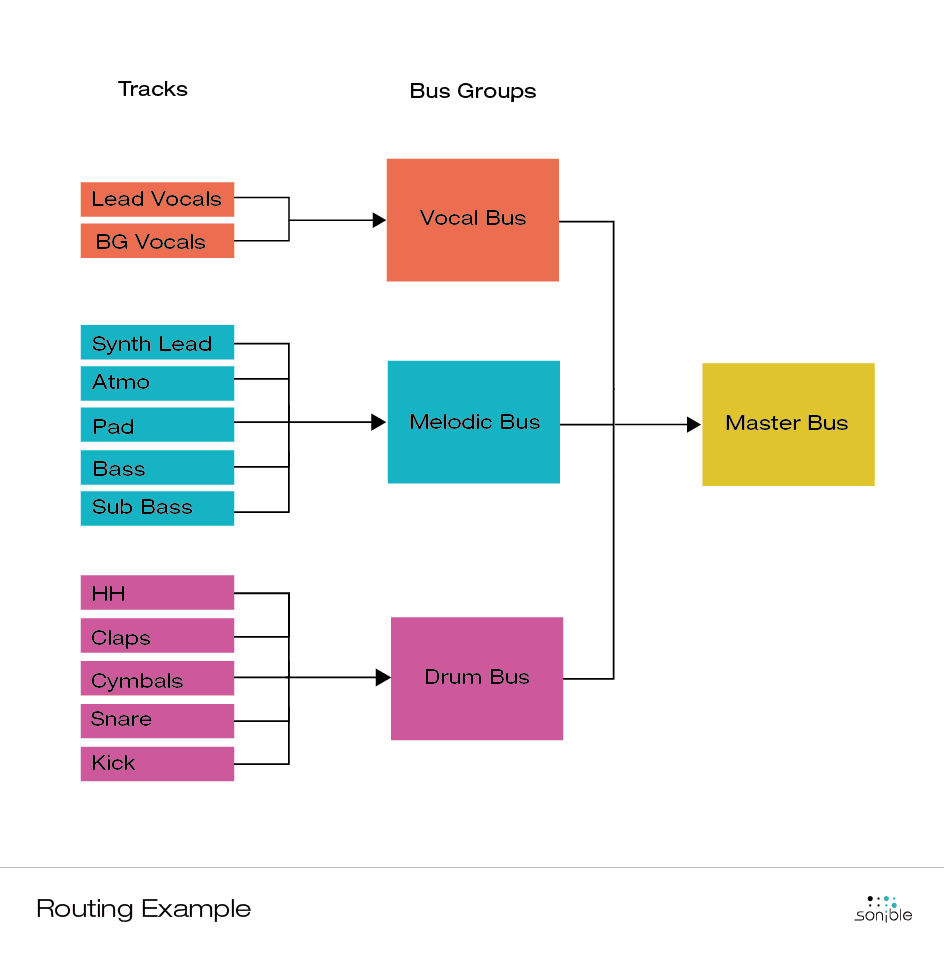 In some DAWs, a mix bus is set up for you in the form of a master channel. In others, you’ll just need to set up a stereo aux channel and route all of your other channels, buses and groups to that channel. Effects are then applied to the entire stereo mix.
In some DAWs, a mix bus is set up for you in the form of a master channel. In others, you’ll just need to set up a stereo aux channel and route all of your other channels, buses and groups to that channel. Effects are then applied to the entire stereo mix.
Bus processing also offers another opportunity to subtly adjust any outstanding balance issues, and to check for phase and level issues before the mastering stage. When done haphazardly, though, it can be a quick way to destroy your dynamics and upset the balance of your overall mix.
If you’ve read this far and mix bus processing just sounds like a fancy way of saying “mastering”, read on, as we distinguish the two all-important steps of music production from one another. As outlined above, mix bus processing is a way of processing the entire mix as one stereo mix, and the end result is a pre-master, as it’s the last step before mastering.
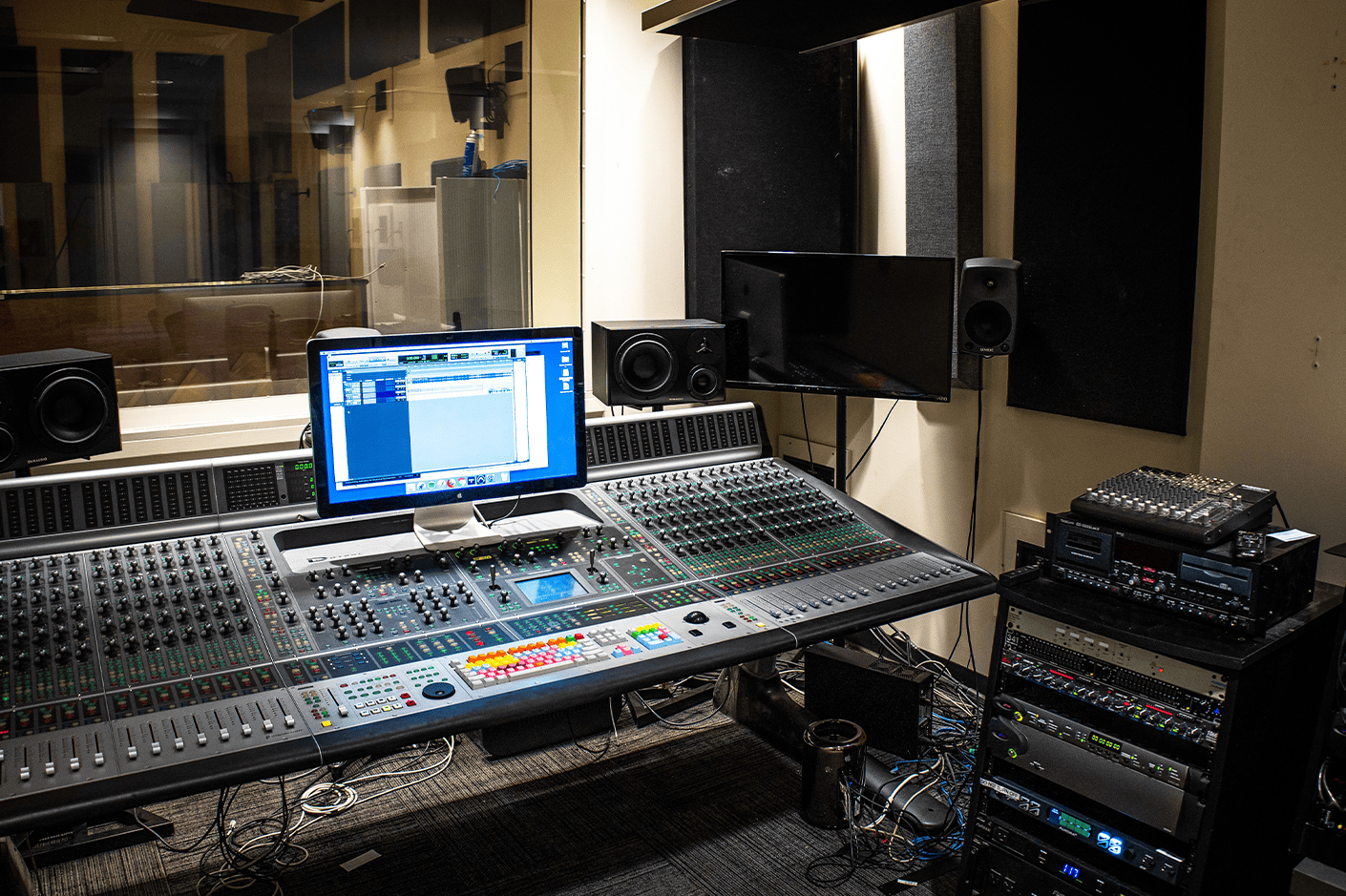 By way of differentiation, mastering is the final step of the production process before a track is made available to the public. Whether it’s done by a seasoned engineer, or you’re Taking your First Steps into Mastering, this step might include stereo enhancement, dynamic processing and tonal balance consideration, as well as more administrative tasks such as file naming and formatting. For projects which contain multiple tracks, a mastering engineer will also ensure that all tracks are at a consistent volume so that they flow between each other seamlessly.
By way of differentiation, mastering is the final step of the production process before a track is made available to the public. Whether it’s done by a seasoned engineer, or you’re Taking your First Steps into Mastering, this step might include stereo enhancement, dynamic processing and tonal balance consideration, as well as more administrative tasks such as file naming and formatting. For projects which contain multiple tracks, a mastering engineer will also ensure that all tracks are at a consistent volume so that they flow between each other seamlessly.
While we mentioned using mix bus processing to “check for issues” above, another contrast in mastering is that it often aims to be more a stage of enhancement and of ensuring that a track conforms to usual standards, rather than curing ills in a mixdown. Mix bus processing is a more acceptable stage to look for issues and solve them while you’re still situated at your virtual mixing console.
So what does mix bus processing entail, and what plugins do you need in your toolbox to achieve a great sounding pre-master? Generally, the main tools you’ll need are an EQ, compressor, and saturator. Armed with these basic pieces of equipment, let’s take a look at some techniques that are frequently employed during mix bus processing.
While this is a contentious issue, and it might seem counterintuitive to start at the end of the signal flow, it’s good practice to apply some mix bus processing before you mix your individual tracks. In other words, start by getting your mix sounding as good as possible using only processing on the mix bus. This then becomes the blueprint for the rest of your mix, and you’ll then be able to hear the effect you’re having on the overall sound as you make changes to individual channels.
Use reference tracks
The mixing process can be a long and arduous task, and that can start to impair your ability to listen objectively and critically. As well as taking regular breaks away from the mix, reference tracks are a key tool for recalibrating your hearing. Place two or three reference tracks at the bottom of your mix, level match them to prevent any bias towards louder tracks, and regularly listen back to them to see how your mix compares.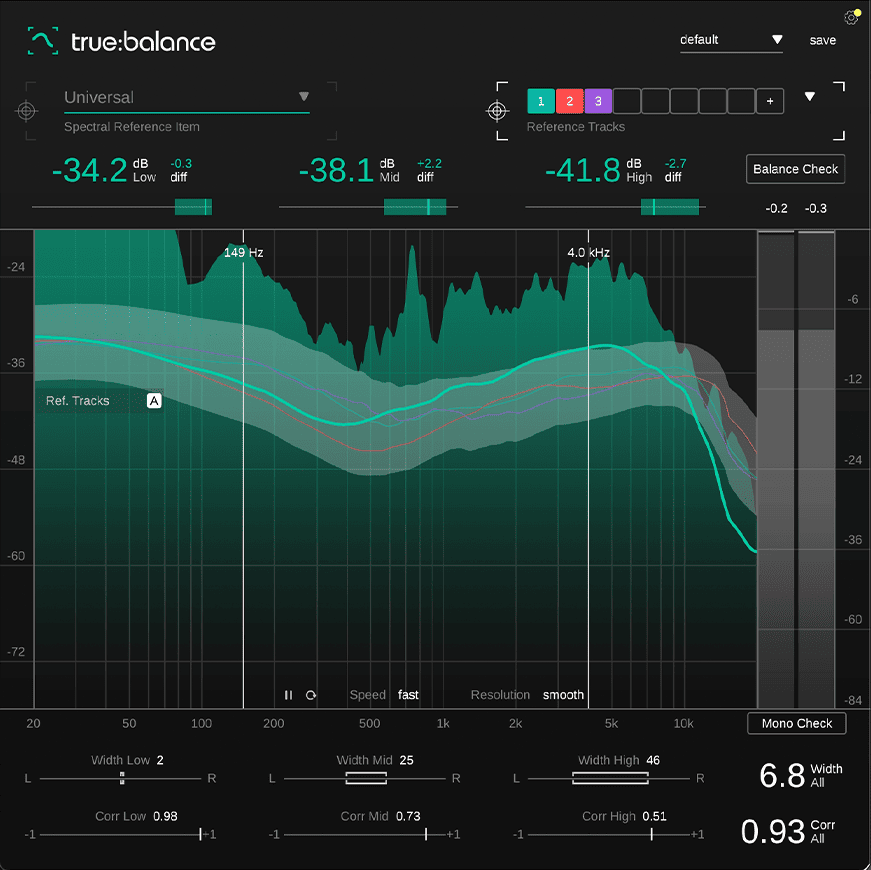 Some plugins such as true:balance and true:level let you go a step further, allowing you to load your tracks into the software for direct comparisons of balance and level. This is a hugely beneficial approach to checking balance and level, but ultimately it’s important to trust your ears.
Some plugins such as true:balance and true:level let you go a step further, allowing you to load your tracks into the software for direct comparisons of balance and level. This is a hugely beneficial approach to checking balance and level, but ultimately it’s important to trust your ears.
Be subtle
Mix bus processing can be a double edged sword. On the one hand, it allows you to make changes to your entire mix at once, which is a faster and more CPU efficient way of applying processing. On the other hand, by altering the mix at the end of the signal flow, you run the risk of ruining the entire mix. For this reason, it’s crucial to be subtle in your processing. The idea is to make several small alterations that amount to a larger overall difference in the finished mix. If you find that you need to apply more aggressive processing, for example to remove an unwanted resonant frequency or to squash a stray peak, you should look to fix those issues within the individual tracks.
Generally, the use of EQ for fixing major problems should be reserved for individual channels for the reasons outlined above. Making big cuts and dips to the entire mix risks taking frequencies away in tracks that you want to leave intact. That said, if you notice a slight build up of frequencies in a certain area at the mix bus stage, you may want to gently attenuate the frequencies in that area with a wide 1dB to 3dB dip.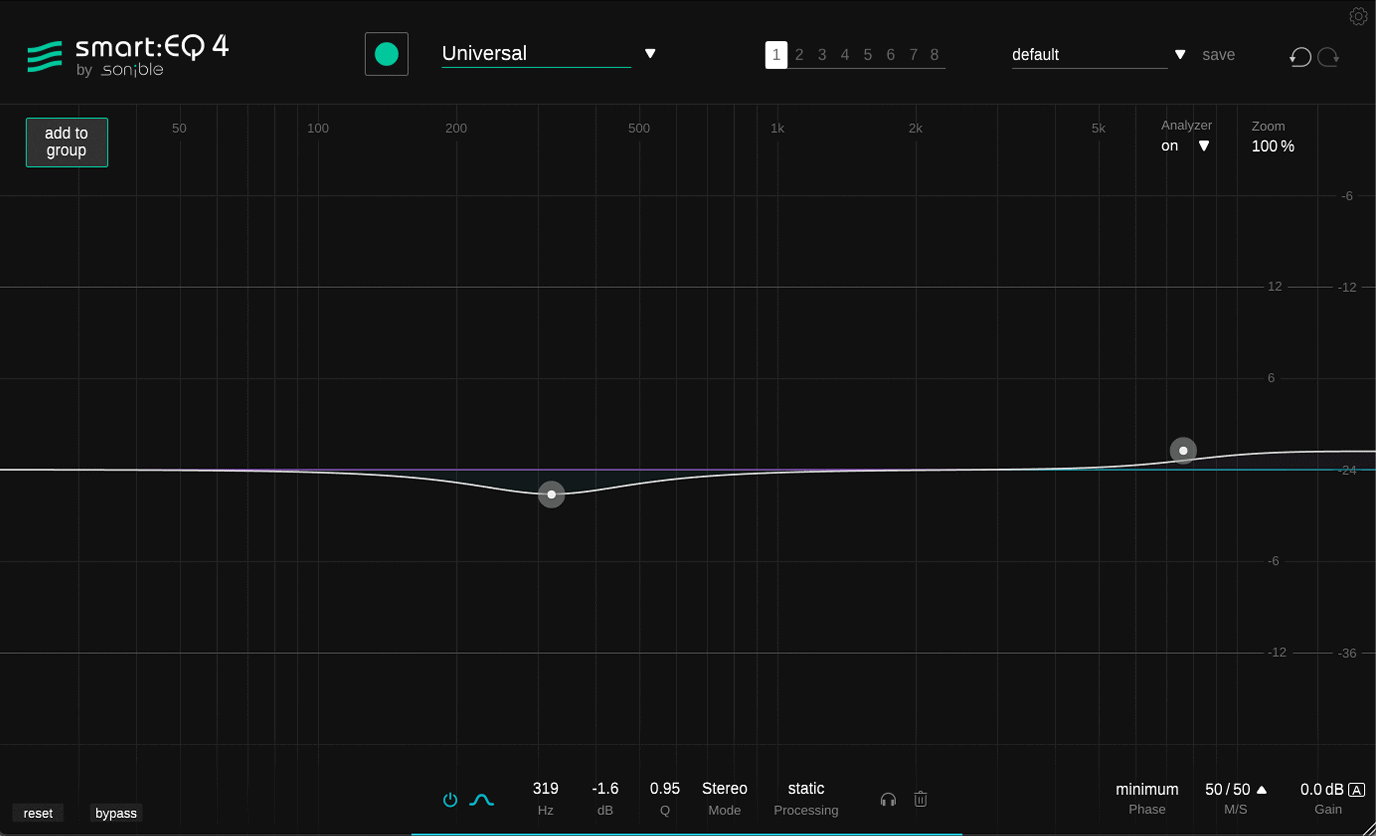 Other uses for EQ at this stage include adding air to the entire mix to make it feel more open and sparkly. Again, a very slight 1dB to 2dB shelving EQ above 7khz out to bring out the clarity of your mix. While you can achieve these techniques using any EQ plugin, you might opt for an emulation of a more colourful EQ. The benefit of this style of EQ, is that they impart their own character and tone on the mix. Try setting a few different EQs to similar settings, and switch between them to see which lends itself to your mix.
Other uses for EQ at this stage include adding air to the entire mix to make it feel more open and sparkly. Again, a very slight 1dB to 2dB shelving EQ above 7khz out to bring out the clarity of your mix. While you can achieve these techniques using any EQ plugin, you might opt for an emulation of a more colourful EQ. The benefit of this style of EQ, is that they impart their own character and tone on the mix. Try setting a few different EQs to similar settings, and switch between them to see which lends itself to your mix.
Dynamics processors are a hugely useful tool throughout the production and mixing process. One of their primary uses is gelling separate tracks together, for example on a drum bus, or in this case, on a mix bus. Start by adding your chosen compressor to your mix bus, you’ll need a compressor with adjustable attack, release, ratio and threshold controls.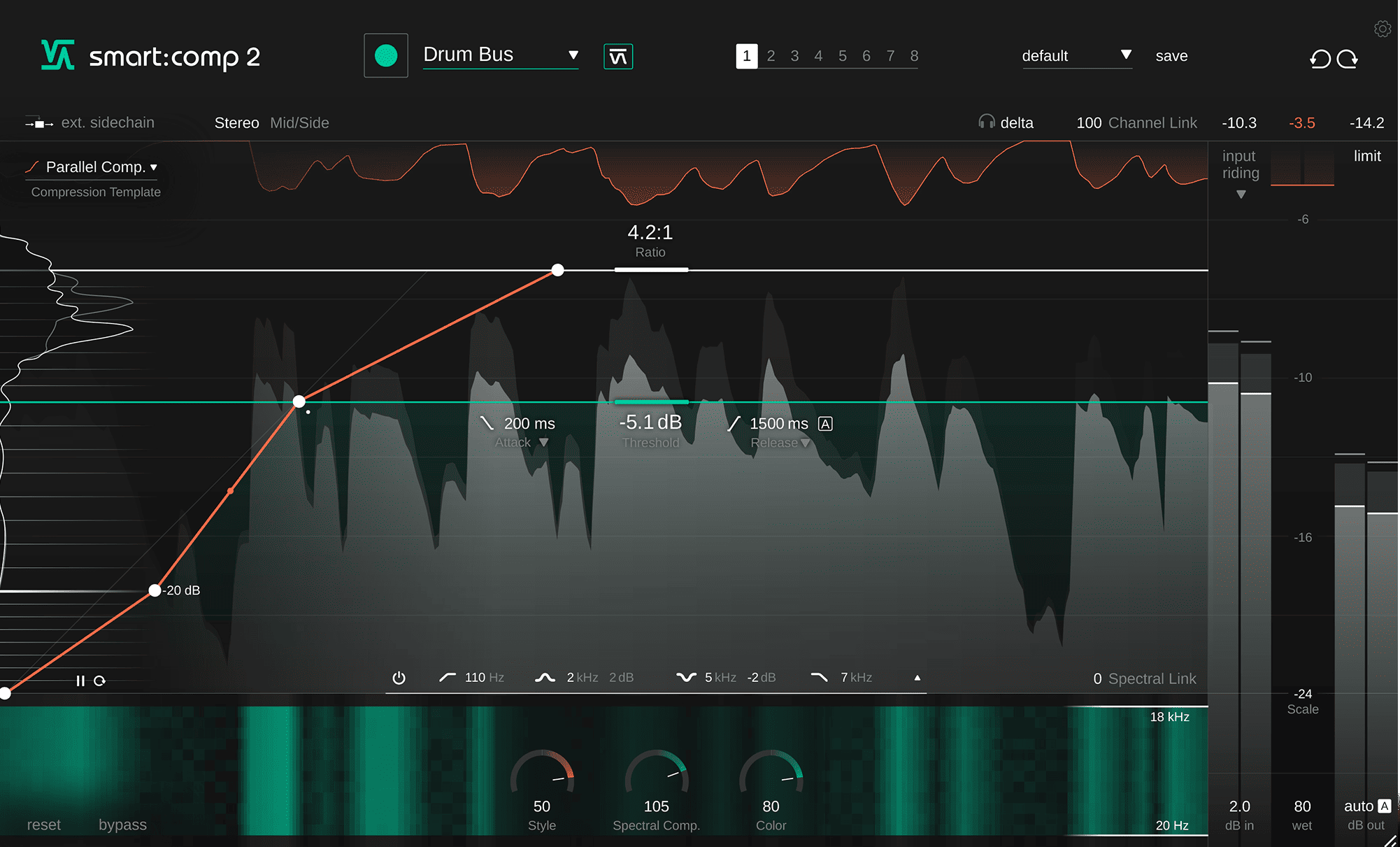 As per the last point, subtlety is your friend here. Start with a low ratio, something like 2:1 should be more than enough to achieve the desired result. Reduce your compressor’s threshold until you are achieving 1dB to 2dB of gain reduction. In order to preserve transients, a medium to slow attack time of around 30ms is suitable, and the release time should be fast enough that the compression stops before the next beat.
As per the last point, subtlety is your friend here. Start with a low ratio, something like 2:1 should be more than enough to achieve the desired result. Reduce your compressor’s threshold until you are achieving 1dB to 2dB of gain reduction. In order to preserve transients, a medium to slow attack time of around 30ms is suitable, and the release time should be fast enough that the compression stops before the next beat.
Technology has come a long way since the days of cutting audio to tape. On the whole, the various advantages to modern technology and digital audio are considered to be a good thing. But there’s no denying that there are some quirks of the pasts’ audio solutions that leave a hole in today’s mixing processes. As a by-product of their inner workings, tape machines add odd-order harmonics, gentle compression and a slight tonal shift to audio. The result is a uniquely warm, characterful tone that is desirable to many mix engineers due to the way it gels a mix together. Today, we don’t all have the facilities to mix our tracks to tape, but there are ways to simulate this process using software. There are plugins on the market that aim to emulate specific tape machines, but you can get pretty close with your DAW’s own built in saturation effect.
As a by-product of their inner workings, tape machines add odd-order harmonics, gentle compression and a slight tonal shift to audio. The result is a uniquely warm, characterful tone that is desirable to many mix engineers due to the way it gels a mix together. Today, we don’t all have the facilities to mix our tracks to tape, but there are ways to simulate this process using software. There are plugins on the market that aim to emulate specific tape machines, but you can get pretty close with your DAW’s own built in saturation effect.
The techniques outlined in this article should serve only as a rough guide, and are far from the last word on mix bus processing. Every artist and song will have different expectations for their mix, so there is no one size fits all approach. Above all else, the key is to use your ears and have fun.
Try rearranging the order of your plugins, or automating certain parameters between sections to differentiate between a verse and chorus. Try going against the first point in this article, and apply your mix bus processing after you’ve mixed all the individual channels. As with anything, when starting out it’s important to try a variety of different techniques, processes, approaches and plugins, and you’ll quickly be able to figure out what works for you.